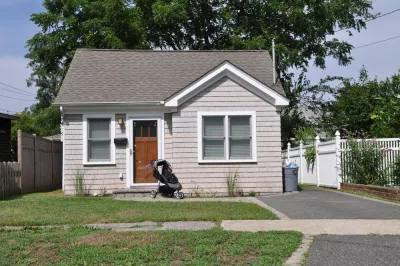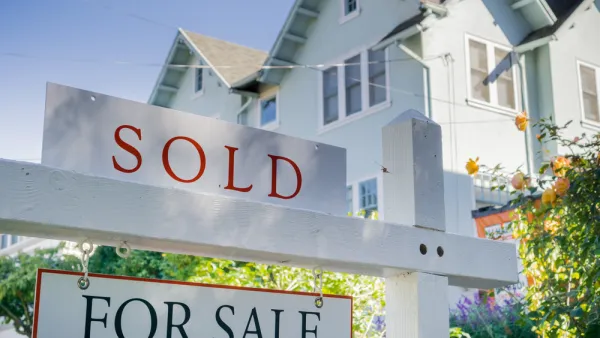Over 13 million potential first-time homebuyers were priced out this year, putting homeownership out of reach for low-income households in most of the largest U.S. cities.

"As home prices continue to surge, low-income households already on the margins of home affordability are on the verge of being completely priced out of homeownership in most major US metro areas." Raheem Hanifa "examined what area median income level was needed to afford a modest-priced home in each of the top 100 metro areas in June of 2021 compared to June of 2020, and then how many renters aged 25-55 were in that group in each time period" for an estimate of "how many likely first-time homebuyers were priced out of homeownership."
Hanifa found that "[b]y June 2021, extremely-and -very low-income households with under 30 percent AMI, and between 30-50 percent AMI respectively, could not afford the median-priced home in any of the 100 largest US metro areas, and in only 20 metros were homes affordable for low-income households with incomes between 50-80 percent of AMI." This translates to 13.4 million potential first-time homebuyers who could not afford a median-priced home. "While households across all AMI levels are impacted by increasing home prices, low-income households with incomes between 50-80 percent of AMI are most at risk of being priced out of affordable homeownership."
"Further compounding these challenges is that even when low-to-moderate income buyers can afford to purchase a home, intense homebuying competition has locked many who rely on FHA and VA loans out of homeownership." The Biden administration, Hanifa writes, should support "policies that build more affordable housing and targeted downpayment assistance to Black households, who already have large homeownership gaps," and "consider employing the Equal Credit Opportunity Act (ECOA) and the exemptions provided through its Special Purpose Credit Program (SPCP), which allows lenders to favorably consider prohibited factors such as race or ethnicity in connection with a special purpose that may include initiatives for 'low-income borrowers of color.'"
FULL STORY: THIS YEAR, HALF AS MANY METRO AREAS ARE AFFORDABLE TO LOW-INCOME HOMEBUYERS AS LAST YEAR

National Parks Layoffs Will Cause Communities to Lose Billions
Thousands of essential park workers were laid off this week, just before the busy spring break season.

Retro-silient?: America’s First “Eco-burb,” The Woodlands Turns 50
A master-planned community north of Houston offers lessons on green infrastructure and resilient design, but falls short of its founder’s lofty affordability and walkability goals.

Delivering for America Plan Will Downgrade Mail Service in at Least 49.5 Percent of Zip Codes
Republican and Democrat lawmakers criticize the plan for its disproportionate negative impact on rural communities.

Test News Post 1
This is a summary

Test News Headline 46
Test for the image on the front page.

Balancing Bombs and Butterflies: How the National Guard Protects a Rare Species
The National Guard at Fort Indiantown Gap uses GIS technology and land management strategies to balance military training with conservation efforts, ensuring the survival of the rare eastern regal fritillary butterfly.
Urban Design for Planners 1: Software Tools
This six-course series explores essential urban design concepts using open source software and equips planners with the tools they need to participate fully in the urban design process.
Planning for Universal Design
Learn the tools for implementing Universal Design in planning regulations.
EMC Planning Group, Inc.
Planetizen
Planetizen
Mpact (formerly Rail~Volution)
Great Falls Development Authority, Inc.
HUDs Office of Policy Development and Research
NYU Wagner Graduate School of Public Service





























